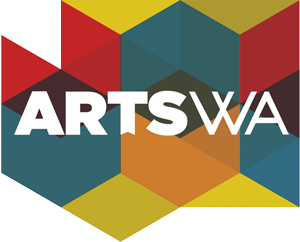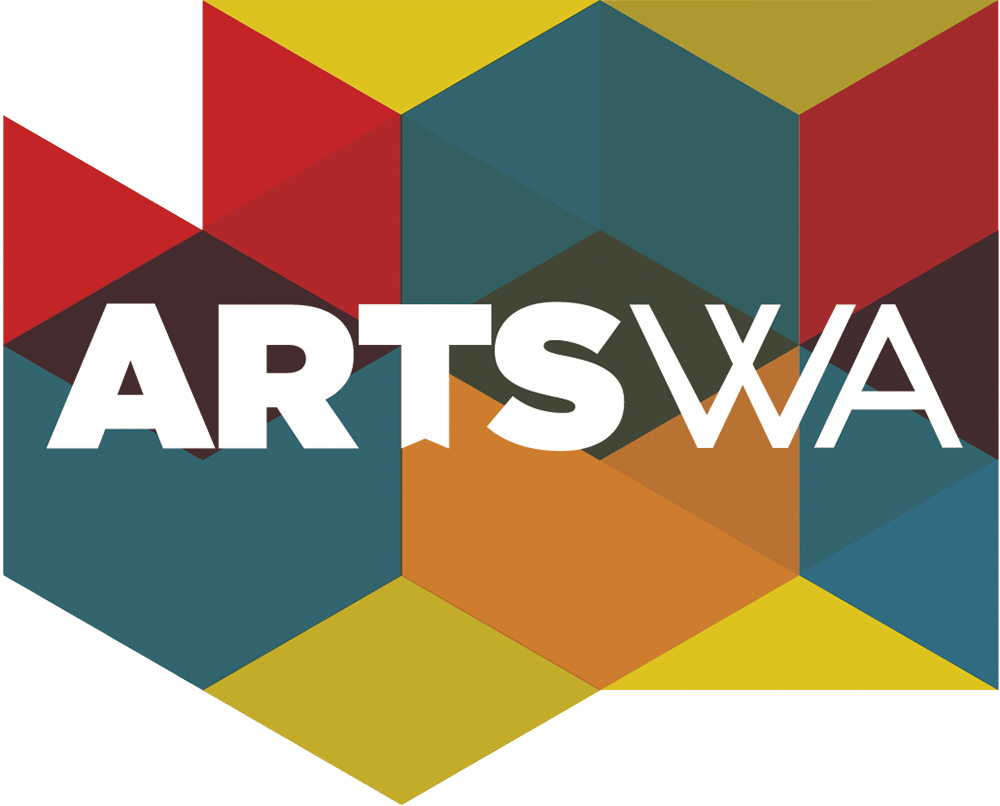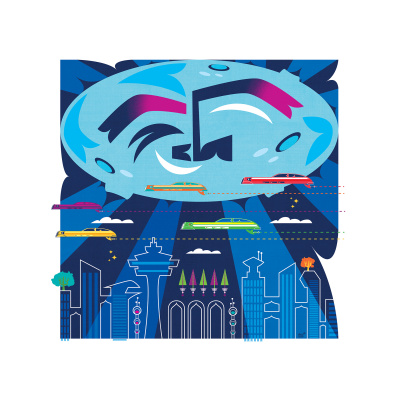Circle of Light, 1992
Richard C. Elliott
(American, born 1945, died 2008)
Location: Yakima Valley SunDome, Yakima
ABOUT THE ARTWORK
Artist Richard C. "Dick" Elliott’s Circle of Light used geometric patterns to encircle the outside edge of the Yakima Valley SunDome roof "like a hatband for the Dome" (in Central Washington). There are twenty-four different panels and patterns across 880 feet of roofline. Elliott used over 48,000 3-inch industrial highway reflectors to create the detailed patterns. Six of the designs draw inspiration from local, traditional Native American Yakama basketry patterns. Each reflector catches the Yakima sunshine. Together they create a beautiful monument to light and color.
Dick Elliott described the experience of creating this artwork over the summer of 1992: “Here are some thoughts, things, and activities that made this project: started July 13, ended August 21, 36 working days, 34 gluing days, averaged gluing 1400 reflectors a day, disassembled, reassembled and carried scaffolding over 10 foot barriers 30 times, up at 4 am, bacon and eggs for breakfast, working in 130 degrees temperature on the roof, drinking 120 ounces of Gatorade or Big Gulps a day. Bill Orleman squeezing the glue gun 48,000 times, myself placing reflectors 48,000 times, climbing out on the plank with my full body harness on and tied into The Hook, having lunch everyday in Yakima, watching the SunDome workers, cussing the flaggers to and from work, guessing the temperature when we pulled into Ellensburg, taking a nap every day before dinner, watching people getting excited and enjoying the "Circle of Light" coming into existence."
This artwork was acquired for the State Art Collection in partnership with Yakima County Commission.
ABOUT THE ARTIST
Richard C. "Dick" Elliott (1945-2008) is known for his large installations created with industrial highway reflectors. His art uses light, color, and radiant geometric patterns to explore the variations of light and interactions between colors. He called it "painting with light" and described how "I was driving the county highways and noticing that these little specks of light would come up out of nowhere, they would get really intense, and then disappear... And I discovered that they were reflectors!" Most of Elliott's work and life was based in Ellensburg, Central Washington, and he was an important contributor to its visual arts community.
Born in Portland, Oregon, Dick Elliott earned a Bachelor of Arts degree from Central Washington University in Ellensburg in 1971. He joined the AmeriCorps VISTA program and served in an Alaska Native community (1966-67), and with the Makah Tribe in Neah Bay, Washington (1968-69) -- these years were very important to him. In the 1980s, he began to explore primary colors and light-active materials. By 1987, he decided to focus on the reflector as his medium of choice. During the 1990s and 2000s, Elliott received over twenty public art commissions, including at the Henry Art Gallery in Seattle, and in Times Square, New York City. During the last year of his life while he was physically limited by pancreatic cancer, he created computer-generated prints using thousands of colors and geometric designs. In 2007, Elliott was honored with a Washington State Governor's Arts and Heritage Award and the national "Recognition for Innovation in Public Art" award from Americans for the Arts.
ARTWORK DETAILS
| Medium | Reflectors on concrete |
| Dimensions | 5 ft 4 in x 880 ft overall (24 designs, each 5 ft 4 in x 36 ft 8 in) |
| ID Number | WSAC1992.125.00A-X |
| Acquisition Method | Site responsive commission |
| Artist Location | Washington, United States |
Location Information
| Agency | Yakima County |
| Artwork Location | Yakima Valley SunDome Encircling dome exterior |
| WA County | Yakima |
| Placement | Exterior |
| Site Type | Other |
| Address | 1301 South Fair Avenue Yakima, WA 98901 |
| Geo. Coordinates | 46.589086, -120.486514 |
| Before Visiting | Some artworks may be located in areas not accessible to the general public (especially in K-12 public schools). Consider contacting the site prior to a visit to ensure access. |
| Map |
Lesson Plans and Documents
Related








.jpg)
.jpg)
.jpg)
.jpg)
.jpg)
